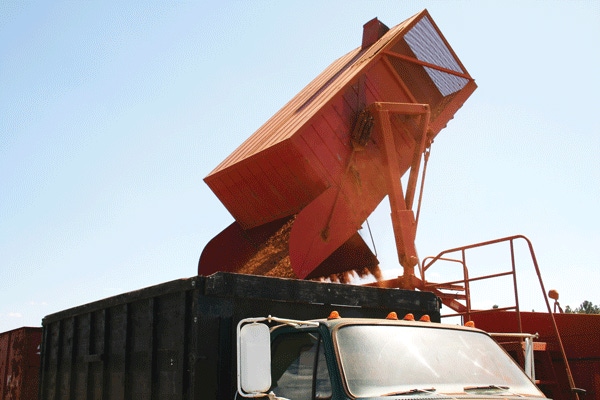October 26, 2010

What’s good for the market might not always be good for farmers. Some peanut producers in the Southeast are discovering that this year, as peanut prices continue to improve for an increasingly disappointing 2010 crop.
“I’m hearing horror stories coming out of the Wiregrass region of southeast Alabama,” says Marshall Lamb, research director of the National Peanut Research Laboratory in Dawson, Ga. “I’ve heard that crop insurance is adjusting some fields and releasing them with six pounds per acre. Some farmers are digging peanuts, leaving them in the windrow, and baling them instead of picking them. It takes a lot of high yields to overcome that kind of negative production.”
Overall, yields likely will be well under 3,000 pounds per acre by the time everything shakes out, said Lamb, speaking at the Southern Region Agricultural Outlook Conference held recently in Atlanta.
“A lot of acreage probably will be abandoned, and all of this is due to extreme heat and late-season drought. From what I hear, the weather will work for our markets this time, though it hasn’t been good for a lot of our farmers,” he says.
Overall peanut supply as well as quality will be down for the 2010 production season, says Lamb. “As a result, prices are increasing. Farmers contracted a lot of peanuts at $450 per ton, but they were at $485 during the last week of September. It will be a tough year as far the returns for a lot of farmers and shellers, and processors will have a lot of problems handling this crop. This will carry forward into 2011, and it’ll be an interesting year,” says Lamb.
According to early reports, he says, quality will be adversely affected by weather conditions from this past season. “I’ve heard of some grades in the 50s. If you look at our loan schedule, we’re at break-even at a 72. Anything less than a 72 is a discount, and anything above 72 is a premium. We’re seeing very low grades, even on irrigated peanuts, and there are huge increases in early crop delivery on Seg. 2 peanuts, those that have excess damage. And a lot of that is being attributed to problems with the burrower bug,” he says.
Underground stink bug
The burrower bug, he explains, can be thought of as an underground stink bug. It burrows into the ground and pushes through the hull and into the kernel while peanuts are still in the ground.
“When shellers look at that kernel during the grading process, that’s one area of damage. The loan rate is $335 on a good peanut and $140 on a Seg 2. peanut. That’s a huge price difference and growers are getting hammered. Seg. 3 peanuts are when graders see visual signs of A flavus mold which creates aflatoxin. These will be factored into the overall yield.
“With peanuts, we’re producing a food ingredient, and these peanuts will have to be removed from the food chain. Our kernel yields will be down on a total basis, and our edible yield will be down even more significantly. This is why manufacturers and processors are extremely worried right now. Normal milling losses can be from 4 to 5 percent, and some are projecting that a lot of these loads will have losses of 17 to 18 percent. It’ll be extremely tough shelling these peanuts,” says Lamb.
This year’s dip in the average yield differs from the past two seasons, when yields have been extremely good, he says. “During the past two years, a lot of people said that the good yields were due to improved varieties and genetics. We do have some good peanut varieties, but I think it has been more due to the weather, and we’re seeing that in 2010.”
Peanut acreage has fluctuated greatly since the 2002 farm bill and the loss of the old quota program, says Lamb.
“We need a 500,000-ton carry-forward in peanuts from one year to the next. Our mills can process 165,000 tons per month, and our marketing year ends in July and starts back in August. We need a carry-forward to keep the mills running in August, September and October while we’re getting the new crop out. We’ve changed our planting dates over the years, making this period of time shorter.”
If you want to see a peanut processor or manufacturer sweat, let the carry-forward get below 500,000 tons, says Lamb. This occurred in 2007 going into 2008, and prices jumped from $450 per ton to $550 per ton. There also was a huge acreage response, followed by above-average yields and a flooded market, he says.
“The demand for peanuts is very strong,” he says. “In a bad economy, the biggest bang for your buck is to buy peanut butter for the protein to help feed your family. While a bad economy is not good in itself, it has been good for the peanut industry. Peanut snacks now are showing the highest demand of any other snack foods category, and it’s in the double digits.”
About the Author(s)
You May Also Like




